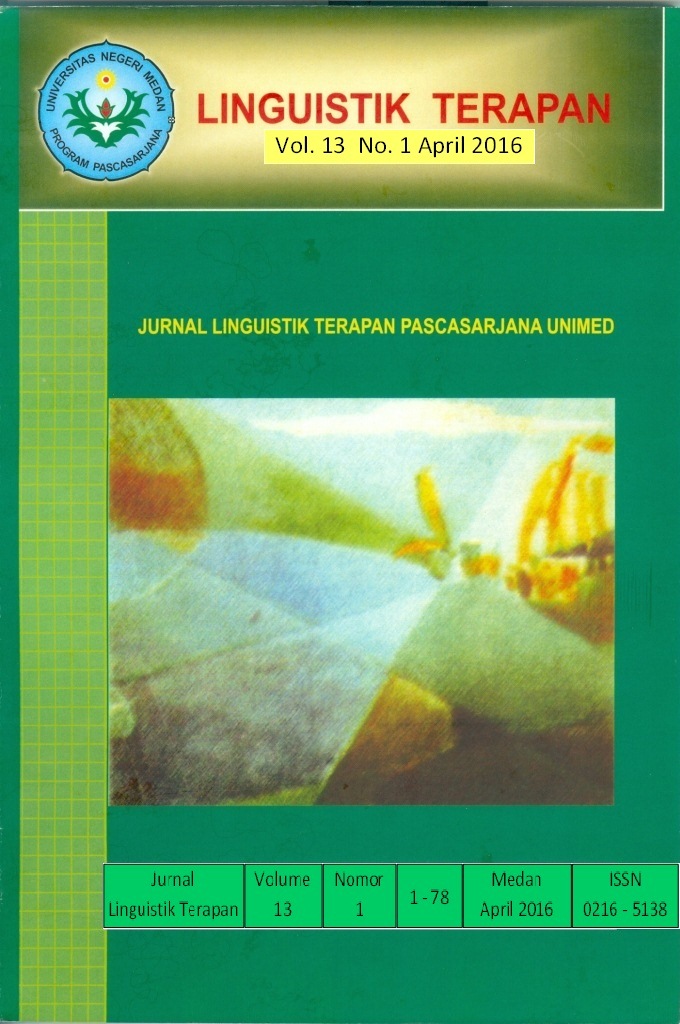Classroom Discourse Structure in MTs Negeri Rantauprapat
DOI:
https://doi.org/10.24114/lt.v13i1.4950Abstract
The objectives of this study were to describe the classroom discourse structure, to describe how the classroom discourse is realized by teacher and students and the reasons for the realizations of the ways they are. The source of the data was English teacher and the students while the data are verbal and non verbal utterances of students and teachers. The instruments for collecting data were video tape recorder and researcher™s field note. The data were collected by observing and recording the utterances uttered by the teacher and students. The findings showed that the classroom discourse structures were dominantly realized by Initiation and Response (IR) structure. It was reflected in teacher direct, elicit and information exchanges was found that the classroom discourse structures. The other exchanges occur are boundary (framing and focusing move), directive, informing, check, accept, react, reply, nomination, marker, bid and conclusion acts. The reasons why the realization as the ways they are (1) teacher as a centre of interaction, (2) teacher gives some questions without any caring to the evaluation, appreciation and feedback without any feedback to make dialogue, (3) students have been disciplined not to speak in classes without a teacher™s direction, and most of them are unwilling to speak English. Keywords: Classroom Discourse Structures, Initiation and Response, Sinclair and Coulthard TheoryDownloads
Published
2016-04-29
How to Cite
Jupriaman, J., & Murni, S. M. (2016). Classroom Discourse Structure in MTs Negeri Rantauprapat. LINGUISTIK TERAPAN, 13(1). https://doi.org/10.24114/lt.v13i1.4950
Issue
Section
Articles






